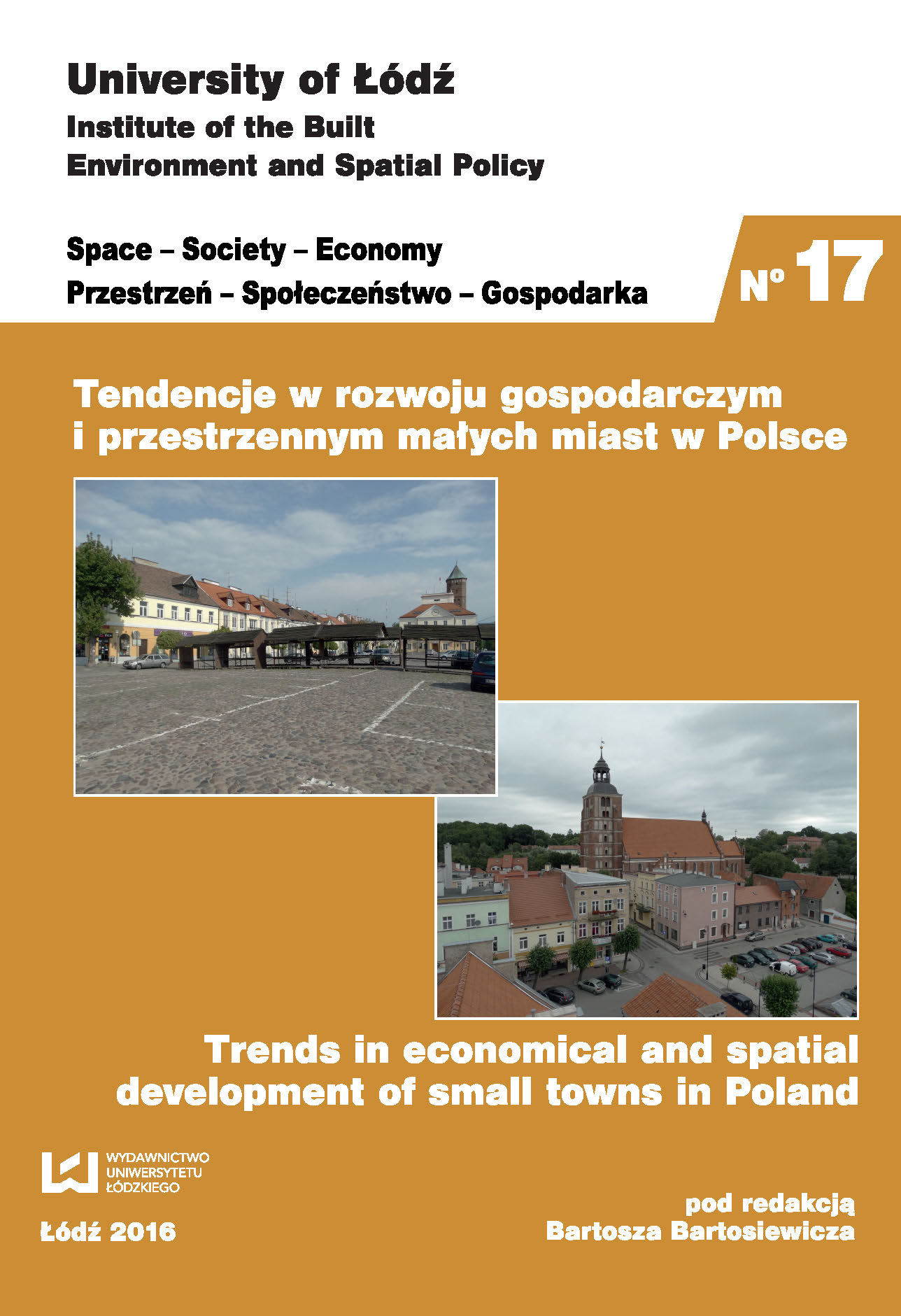Znaczenie „małych miast” w kontekście rozwoju struktur ponadlokalnych na przykładzie Aglomeracji Górnośląskiej
DOI:
https://doi.org/10.18778/1733-3180.17.04Słowa kluczowe:
Ochrona krajobrazu, aglomeracja górnośląska, obszar funkcjonalny, dziedzictwo poprzemysłowe, środowisko przyrodniczeAbstrakt
Przedmiotem prezentowanych badań są związki krajobrazowe obszarów przyrodniczych i poprzemysłowych, przyjęte jako kryterium delimitacji struktury organizacyjno-przestrzennej o cechach obszaru funkcjonalnego. Charakterystyczna struktura przestrzenna rozproszonych dzielnic aglomeracji górnośląskiej, przyrównanych do „małych miast”, jest wyrazem przestrzennym tych związków. Celem badań jest wskazanie możliwości ochrony wartości przyrodniczych i kulturowych wskazanych obszarów, a także rozwój ośrodków lokalnych, w odniesieniu do tematu zintegrowanego podejścia terytorialnego.
Pobrania
Bibliografia
Bartosiewicz B., 2015, Delimitacja obszarów funkcjonalnych małych i średnich miast w regionie łódzkim, „Studia Miejskie”, 18, s. 25–37.
Google Scholar
DOI: https://doi.org/10.25167/sm.2423
Degórski M., 2009, Krajobraz jako odbicie przyrodniczych i antropogenicznych procesów zachodzących w megasystemie środowiska geograficznego, „Problemy Ekologii Krajobrazu”, 23, s. 53–60.
Google Scholar
Jankowski A.T., Rzętała M., 2007, Stereotyp w postrzeganiu stanu środowiska przyrodniczego Wyżyny Śląskiej, [w:] Ostaszewska K. (red.), Znaczenie badań krajobrazowych dla zrównoważonego rozwoju (The role of landscape for sustainable development), Wydawnictwo Uniwersytetu Warszawskiego, Warszawa, s. 641–654.
Google Scholar
Koncepcja Przestrzennego Zagospodarowania Kraju 2030.
Google Scholar
Kopiec B., 2005, Ruda Śląska. Zarys dziejów, cz. I: Ruda, Orzegów, Godula, Chebzie, Ruda Śląska, Polmark, Ruda Śląska.
Google Scholar
Krajowa Strategia Rozwoju Regionalnego 2010–2020: Regiony, Miasta, Obszary wiejskie.
Google Scholar
Kuźnik F., 2015, Zarządzanie procesem metropolizacji aglomeracji górnośląskiej, „Biuletyn KPZK PAN”, 259, s. 89–99.
Google Scholar
Myga-Piątek U., 1999, Krajobrazy obszaru Górnośląskiego Związku Metropolitalnego, [w:] Dulias R., Hibszera A. (red.), Górnośląski Związek Metropolitalny Zarys Geograficzny, Wydawnictwo Uniwersytetu Śląskiego, Katowice, s. 131–139.
Google Scholar
Myga-Piątek U., 2015, Polityka krajobrazowa Polski – u progu wdrożeń, „Przegląd Geograficzny”, 87, s. 5–25.
Google Scholar
DOI: https://doi.org/10.7163/PrzG.2015.1.1
Rosenkiewicz K., 2012, Obszary funkcjonalne jako nowa kategoria polityki regionalnej i polityki przestrzennej w Polsce, „Rozwój Regionalny i Polityka Regionalna”, 17–18, s. 71–88.
Google Scholar
Szaton K., 2015, Krajobrazowy Park Linearny doliny Przemszy i Brynicy. Koncepcja ze szczególnym uwzględnieniem wartości przyrodniczych, Niepublikowana praca magisterska, Politechnika Śląska, Gliwice.
Google Scholar
Śleszyński P., 2012, Delimitacja Miejskich Obszarów Funkcjonalnych Stolic Wojewódzkich, Ekspertyza wykonana dla Ministerstwa Rozwoju Regionalnego.
Google Scholar
Ustawa o planowaniu i zagospodarowaniu przestrzennym z dnia 27 marca 2003 r.
Google Scholar
Pobrania
Opublikowane
Jak cytować
Numer
Dział
Licencja

Utwór dostępny jest na licencji Creative Commons Uznanie autorstwa – Użycie niekomercyjne – Bez utworów zależnych 4.0 Międzynarodowe.









